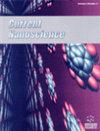生物传感器在SARS-Cov-2检测中的作用:现状和未来展望
IF 1.5
4区 材料科学
Q4 BIOTECHNOLOGY & APPLIED MICROBIOLOGY
引用次数: 0
摘要
世界正在与一场可能前所未有的严重流行病作斗争;COVID-19是由严重急性呼吸综合征冠状病毒2 (SARS-CoV-2)引起的。截至2022年8月31日,世界卫生组织宣布确诊病例总数为599,825,400例,来自223个国家的确诊死亡人数为6,469,458人。SARS-CoV-2是一种β-冠状病毒,是一种包膜无节段正义RNA病毒。它是SARS和MERS病毒的近亲,很可能是通过蝙蝠进入人类的。人与人之间的传播非常迅速。与患者接触的人甚至携带者都被感染,导致了广泛的污染链。我们将对生物传感器在检测SARS-CoV-2中的作用进行简要回顾。生物传感器用于病毒检测已经很长时间了,可以用于快速检测新型冠状病毒。本文综述了生物传感器在新型冠状病毒检测中的应用,重点介绍了具有成本效益的纸质传感器、纳米生物传感器、场效应晶体管(fet)和片上实验室集成平台。本文章由计算机程序翻译,如有差异,请以英文原文为准。
The Role Of Biosensors In Detection Of SARS-Cov-2: State-Of-The-Art And Future Prospects
The world is fighting a pandemic so grave that perhaps it has never been witnessed before; COVID-19 is caused by the severe acute respiratory syndrome coronavirus 2 (SARS-CoV-2). As of August 31st, 2022, the WHO declared the total number of confirmed cases was 599,825,400, with 6,469,458 confirmed deaths from 223 countries under the scourge of this deadly virus. The SARS-CoV-2 is a β-coronavirus, which is an enveloped non-segmented positive-sense RNA virus. It is a close relative of the SARS and MERS viruses and has probably entered humans through bats. Human-to-human transmission is very rapid. People in contact with the patient or even the carriers became infected, leading to a widespread chain of contamination. We are presenting a mini-review on the role of biosensors in detecting SARS-CoV-2. Biosensors have been used for a very long time for viral detection and can be utilized for the prompt detection of the novel coronavirus. This article aims to provide a mini-review on the application of biosensors for the detection of the novel coronavirus with a focus on cost-effective paper-based sensors, nanobiosensors, Field effect transistors (FETs), and lab-on-chip integrated platforms.
求助全文
通过发布文献求助,成功后即可免费获取论文全文。
去求助
来源期刊

Current Nanoscience
工程技术-材料科学:综合
CiteScore
3.50
自引率
6.70%
发文量
83
审稿时长
4.4 months
期刊介绍:
Current Nanoscience publishes (a) Authoritative/Mini Reviews, and (b) Original Research and Highlights written by experts covering the most recent advances in nanoscience and nanotechnology. All aspects of the field are represented including nano-structures, nano-bubbles, nano-droplets and nanofluids. Applications of nanoscience in physics, material science, chemistry, synthesis, environmental science, electronics, biomedical nanotechnology, biomedical engineering, biotechnology, medicine and pharmaceuticals are also covered. The journal is essential to all researches involved in nanoscience and its applied and fundamental areas of science, chemistry, physics, material science, engineering and medicine.
Current Nanoscience also welcomes submissions on the following topics of Nanoscience and Nanotechnology:
Nanoelectronics and photonics
Advanced Nanomaterials
Nanofabrication and measurement
Nanobiotechnology and nanomedicine
Nanotechnology for energy
Sensors and actuator
Computational nanoscience and technology.
 求助内容:
求助内容: 应助结果提醒方式:
应助结果提醒方式:


